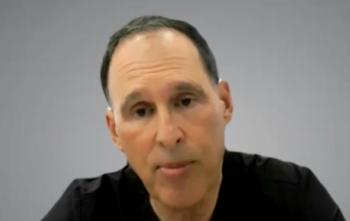
Psoriasis Drug Costs Have Risen, but Less Expensive Options Are Out There
The cost of biologic medications used to treat plaque psoriasis has increased over time, according to a new study published in J
However, researchers found that costs could be significantly reduced if patients and doctors chose lower-cost treatment options or if drug prices better reflected how effective and safe each medication is.
Plaque psoriasis is a chronic skin condition that causes red, scaly patches on the body.
Over the years, several biologic medications have been approved by the FDA to treat it. These drugs work by targeting parts of the immune system that contribute to inflammation.
Early biologics focused on blocking tumor necrosis factor (TNF)-α—a protein in inflammation that fights against infection—while newer ones target interleukins (IL)-12, IL-17 and IL-23.
Past studies have shown that IL-17 and IL-23 inhibitors are generally more effective at reducing the area of skin affected by psoriasis than TNF-α blockers.
However, treatment decisions often depend on a patient’s overall health, other conditions, and personal factors. Most patients have more than one biologic option.
The cost of these treatments can be very high. For example, as of January 2023, a year of treatment ranged from about $1,600 for biosimilar Remicade (infliximab) to nearly $80,000 for Skyrizi (risankizumab).
On the other hand, drugs such as Humira (adalimumab) and Stelara (ustekinumab) may see price changes due to competition from biosimilars and Medicare negotiations.
Because of high prices, insurance companies often limit access to certain drugs or favor ones with better negotiated deals, researchers said.
To better understand how the use and cost of biologics have changed, researchers analyzed insurance data from 2007 to 2021 using a national commercial claims database.
The cross-sectional study included patients with moderate to severe plaque psoriasis who were new to biologic treatment.
Researchers studied 11 FDA-approved biologics based on national treatment guidelines, including TNF-α inhibitors such as Humira, Cimzia (certolizumab pegol), Enbrel (etanercept) and Remicade; IL-12/IL-23 inhibitor Stelara; and a few IL-17 and IL-23 inhibitors.
Biosimilar versions of Remicade were also included.
The study tracked the percentage of patients starting each drug, estimated annual treatment costs and differences in treatment choices by patient characteristics such as age, sex, location, insurance type and prior treatments.
Researchers also estimated cost savings if patients had received the lowest-cost drug in each class. Data analysis occurred between August 2023 and October 2024.
Out of more than 76,000 patients with plaque psoriasis who started biologic treatment between 2007 and 2021, it was found that over half were female, and most were between the ages of 30 and 59. About 30% also had inflammatory arthritis.
Over time, there was a clear transition in the types of drugs being used. For example, patients increasingly started treatment with IL inhibitors instead of TNF-α inhibitors.
By 2021, 42% of patients began treatment with Skyrizi and 21% with those such as Taltz (ixekizumab) or Cosentyx (secukinumab).
The cost of treatment also rose immensely during this period.
For instance, the average annual cost jumped from about $21,000 in 2007 to over $47,000 in 2021.
That year, prices ranged from $12,413 for Inflectra (a biosimilar version of infliximab) to $70,043 for Skyrizi.
Researchers also found that if patients had always been started on the lowest-cost drug in each class, the average cost in 2021 could have been reduced by 44%, to around $26,000.
Overall, this study found that certain factors influenced which drugs patients were prescribed. Those more likely to receive IL inhibitors were men, older adults, people living in the northeast and those without arthritis or inflammatory bowel disease.
A key strength was its large sample size and national claims data, which revealed a shift from older TNF-α inhibitors to newer, more effective IL-17 and IL-23 inhibitors.
However, this shift was linked to rising treatment costs, which more than doubled to nearly $50,000 by 2021.
In addition, the study highlighted significant price variation among drugs and showed that average costs could be cut by nearly half if the lowest-cost options in each drug class were used.
Researchers noted important clinical and demographic factors influencing treatment choices as well.
For example, younger and female patients were more likely to receive TNF-α inhibitors, possibly due to their safety during pregnancy, researchers claimed.
Patients with comorbid conditions such as psoriatic arthritis were also more likely to receive these older medications.
The study did have limitations, including not fully accounting for patient out-of-pocket costs. It also focused only on first-line treatments.
Researchers suggest that future investigations in this field should look at long-term treatment patterns, patient outcomes and more broad sociodemographic factors to better guide cost-effective and equitable psoriasis care.
Newsletter
Get the latest industry news, event updates, and more from Managed healthcare Executive.





















































